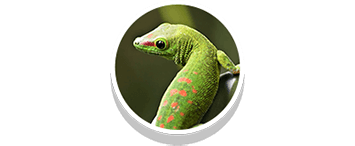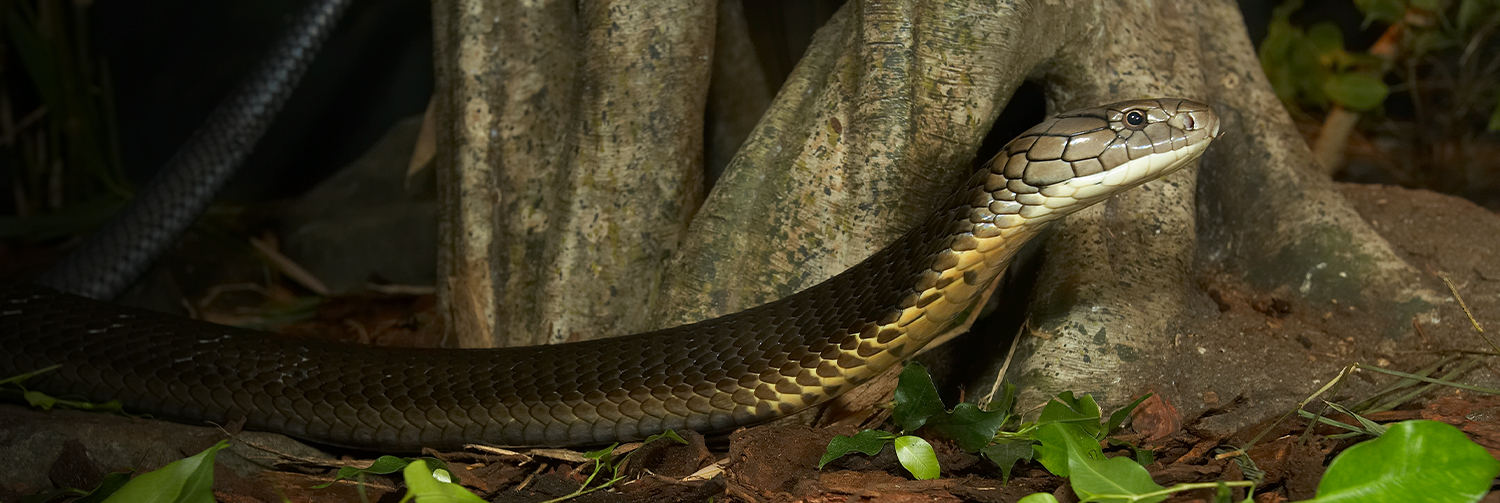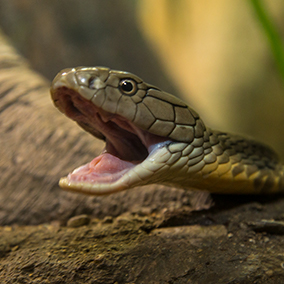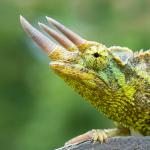
king cobra

Reptiles


Threatened
facts

The king cobra is the longest venomous snake in the world. Very large king cobras can be 18 feet long—that’s about a foot longer than a minivan!

King cobras even eat other venomous snakes. Sometimes they eat lizards, too.

King cobras also live in bamboo thickets, swamps, and croplands—often near streams.
description

description
Sniffing out prey
A snake has nostrils, and it also has another way to smell its prey—a small organ in the roof of its mouth. As a cobra’s forked tongue flicks in and out, it picks up odor particles and passes them over this organ. The name of this organ is the vomeronasal organ.

Dangers
King cobras lose their homes when people cut trees, plant crops, and build cities. Some people catch these snakes and sell them as pets. Some kill king cobras for their skin and meat, or for making folk remedies.

Life in the hood
A king cobra would rather scare you away than bite you. If it feels threatened, it lifts its head and body high. Ribs in its neck extend to form a hood. It makes a loud hiss that sounds more like a growl. The message is, "I am big and bad! I will bite you if you come any closer!"

Preying on predators
What animal would even try to attack a king cobra? The snake's most famous predators are mongooses. These furry little animals are naturally resistant or immune to snake venom. They are quick enough to dart in and bite the back of the cobra's neck before the snake can defend itself.

Queen cobras?
To prepare for laying eggs, a mother king cobra scoops together a pile of leaves. She lays her eggs there and covers them with more leaves. Most other snake species slither away after laying eggs, but not a king cobra mother! She coils around her nest and makes sure her eggs stay warm until they hatch.














